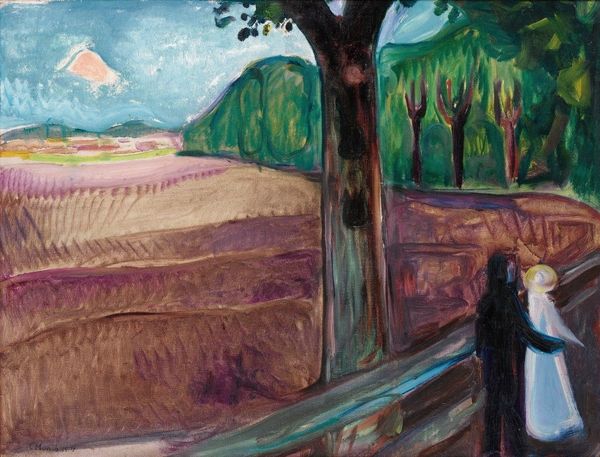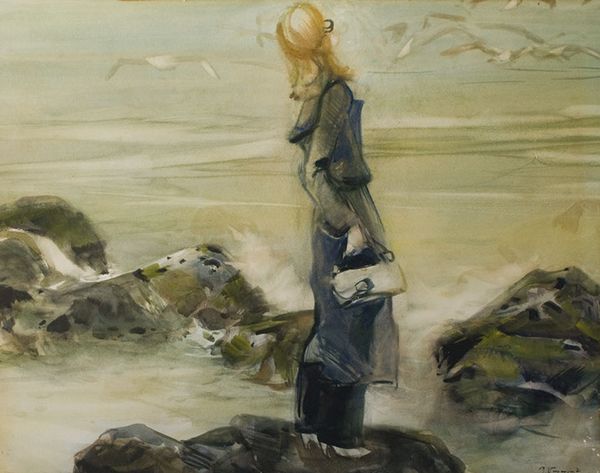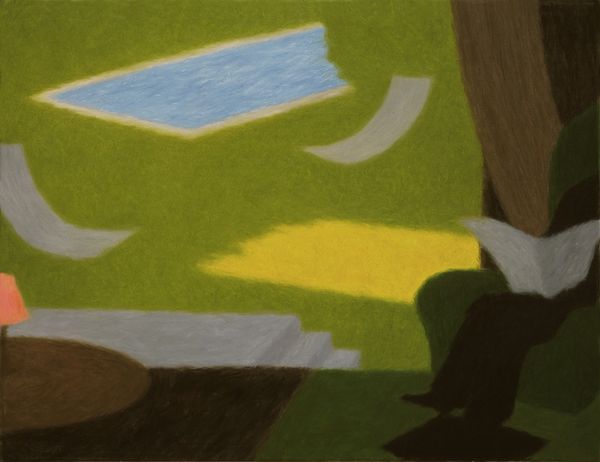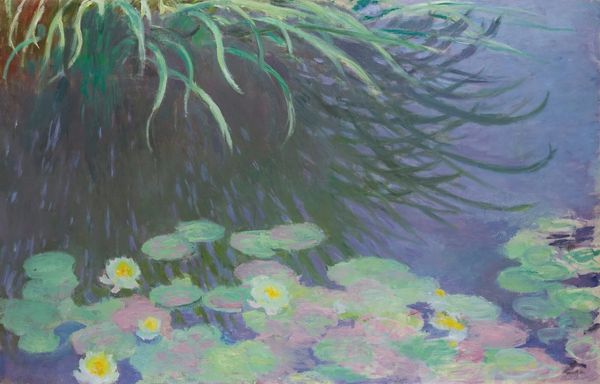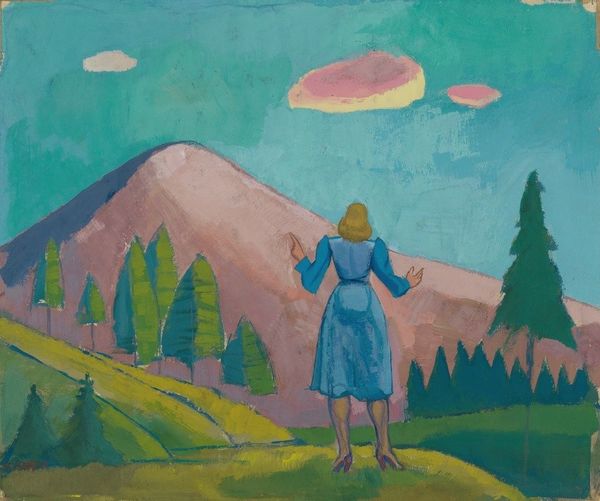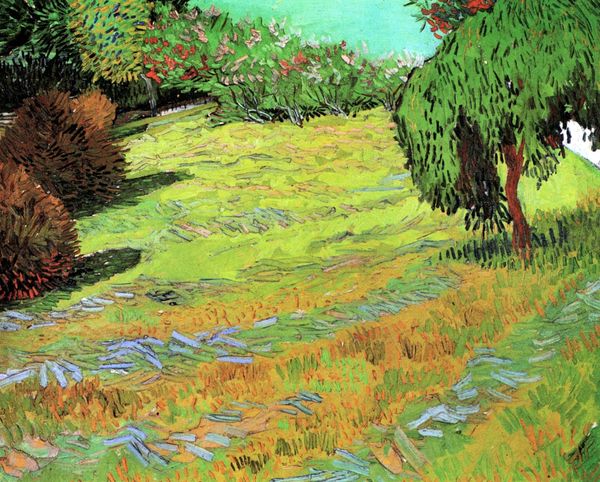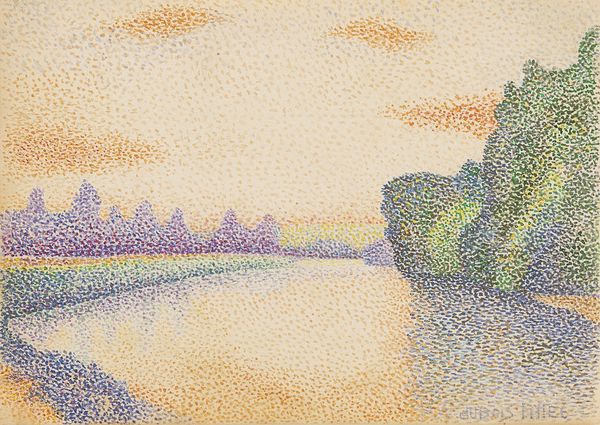
painting, oil-paint
#
portrait
#
painting
#
oil-paint
#
landscape
#
figuration
#
oil painting
#
painting painterly
#
modernism
#
realism
Copyright: Tetyana Yablonska,Fair Use
Curator: Tetyana Yablonska painted this piece, "Youth," in 1969. It's an oil painting that blends realism and modernist sensibilities in a really captivating way. Editor: It's the stillness that strikes me first. The figure seems so poised, almost meditative, overlooking that very serene pond or lake. It evokes this palpable feeling of quiet introspection. Curator: Yablonska, despite adhering to social realism for a good portion of her career, consistently experimented with composition. The youth is central but nearly anonymous—do you think the averted gaze holds particular significance? Editor: Absolutely. By turning the figure away, Yablonska transforms him into a universal symbol, really. The bag slung over his shoulder suggests a journey, perhaps the beginning of a life, viewed against this stylized, almost dreamlike landscape. It certainly engages the viewer politically—inviting reflections on the aspirations and expectations projected onto youth during that period. Curator: Yes, the lack of distinct features prompts that broad projection of cultural ideals. Those rolling green hills symbolize boundless opportunities and growth. Water itself has often carried complex symbolism. Here, could it signify purity and reflection? Editor: It very well could. This imagery might have carried immense resonance with contemporary audiences seeking a redefinition of national identity—perhaps expressing the fluidity of shifting socio-political contexts. Yablonska gives youth the last word in cultural revolutions by rendering this figure lost in their own reflection, turning away from viewers. Curator: Given Yablonska’s position as a celebrated Soviet artist, what contradictions emerge when interpreting symbols of freedom and individual pursuit alongside official socialist aesthetics? Is there a subversive intention? Editor: Subversion is never overt, of course, but her decision to place such a private, internal moment at the heart of an otherwise optimistic scene does invite questions about conformity and the search for personal meaning. Its political implications extend past the Iron Curtain because Yablonska's compositions touch upon universal tensions. Curator: What lasting thought does this painting leave us with, considering its blend of personal contemplation and symbolic weight? Editor: For me, it emphasizes art's inherent ability to function both as cultural mirror and aspirational beacon. Thank you, Tetyana Yablonska, for reminding us of those simultaneous responsibilities. Curator: Indeed. By contemplating "Youth", we access the ever-evolving symbolic dialogue of art history.
Comments
No comments
Be the first to comment and join the conversation on the ultimate creative platform.
